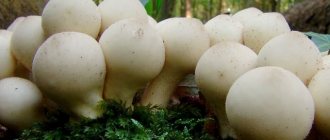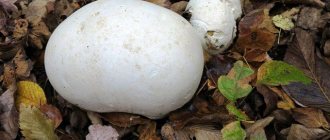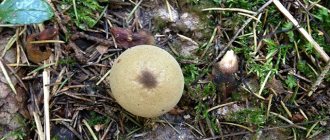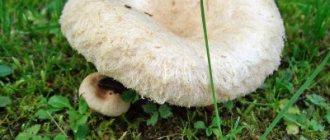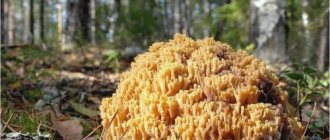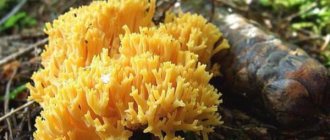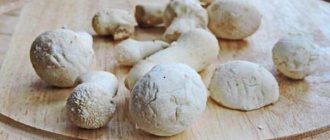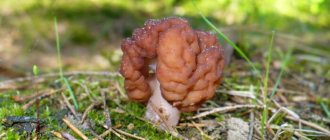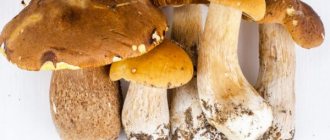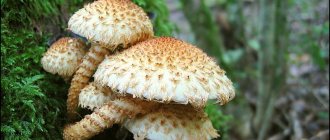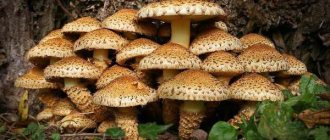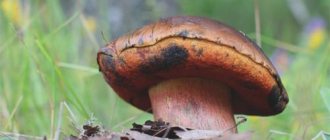If you love intellectual relaxation, then you probably do crossword puzzles or scanword puzzles in your spare time. Of course, this is a very exciting activity that allows you to expand your horizons and demonstrate your erudition.
Just how often have you encountered a situation where you need to guess, for example, a 6-letter word that you have no idea about? Most likely, you will remember more than one such case when, due to such an unfortunate misunderstanding, another scanword puzzle remained incompletely solved. But now you have a unique assistant - the Crossopen.ru !
Answers to scanwords on VKontakte, Odnoklassniki and many others
What is our service?
It will replace you with many dictionaries, encyclopedias and well-read relatives with whom you previously consulted if you were unable to find the right word on your own. With Crossopen.ru you can easily solve a crossword puzzle of any difficulty level using an intuitive search form.
The main advantage of our service is a huge database of words and questions for which you can find the appropriate answer. A user-friendly interface will provide you with a quick search for words of 3, 4, 5 or more letters . It is important to note that at the same time you can clarify your request by indicating the subject, as well as the letters you already know - the so-called word search by mask .
Let's look at the interface using a clear example: you need to find out the poet's last name, which has 6 letters, and the third is “sh”. You set up a search for 6-letter words, click on the corresponding empty cell and insert the letter you know, after which you specify the keyword - “poet”. As a result, you get various options, one of which is sure to be correct. This way you can find any answers to crossword puzzles , because it’s very simple!
You can solve any crossword puzzle!
Our service is absolutely free, and you can freely use it to search for answers to any crossword or scanword puzzle, both from the newspaper and on the Internet. For example, our database contains almost all the answers to Odnoklassniki and VKontakte crossword puzzles, which will allow you to solve them quickly and with pleasure.
Plus, you can create these kinds of brain teasers yourself! To do this, just list the words in alphabetical order and choose the options that suit you with descriptions so that the resulting crossword puzzle is interesting and educational.
So if you like to solve crosswords, the Crossopen.ru will become a convenient and reliable assistant for you. Spend your free time doing your favorite activity with pleasure!
Description
The spiny milkweed is a small pink-red mushroom that looks like a wave.
hat
Milky spiny.
Size: up to 6 cm in diameter.
Shape: from flat-convex (at a young age) to prostrate and depressed (at maturity) with drooping or straight edges. In mature specimens, the edges are usually thin and lobate-shaped.
Color: pink with a red concentric pattern in several rows, fades over time to light pink. The scales are dark red.
Surface: rough due to small scaly growths.
Leg
Lactarius spinosulus.
Size: 5*0.8 cm in length and diameter, respectively.
Shape: often there are specimens with a deformed, curved leg, less often it is exactly cylindrical. There is a cavity inside the leg. When subjected to mechanical action (for example, pressure), it locally acquires a darker color.
Color: same color as the hat, but a little lighter.
Surface: smooth.
Milky spiny.
Spore-bearing layer
Type of hymenophore: lamellar.
Features: the plates are adherent, medium in thickness and frequency of arrangement.
Color: yellow or ocher.
Milky spiny.
Pulp
Density: low, the pulp is quite fragile.
Color: white or yellowish, when cut it acquires a dark green (even black) color.
Smell and taste: not pronounced. When the integrity of the surface is broken, the pulp releases a milky juice that changes color in air from white to green. At first it has a mild taste, but then it becomes bitter.
Spore powder
Color: light ocher.
Characteristics of spores: medium size, ovoid.
Interesting Facts
Milky spiny.
Since lacticaria are not deadly, and species similar to the spiny lacticaria have approximately the same properties as it, it is not so scary to confuse these mushrooms.
But you should know that some people are not recommended to eat mushrooms at all: these are small children, women during pregnancy and lactation, people suffering from chronic diseases of the gastrointestinal tract and prone to allergic reactions.
Spreading
Lactarius lilacinus var. spinosulus.
Distribution: the species is widespread (almost everywhere in temperate climates).
Fruiting time: late summer - early autumn.
Features: forms mycorrhiza with birch trees. Found in deciduous and mixed forest belts. Prefers places with high humidity.
Evaluation of taste qualities, medicinal properties, benefits and possible harm
Puffball puffball is a little-known but tasty and edible mushroom. It also has healing properties. Dustweed is used as an antitumor agent, in the treatment of anemia, runny nose, stomach diseases, and to stop bleeding (the pulp is applied to the wound, which then heals quickly).
It is also known as a remedy that cleanses the body of harmful substances.
Raincoat is also widely used in cosmetology to improve the condition of the skin (masks based on it make the skin elastic and healthy). To treat diseases of the thyroid gland and fibroids, prepare a tincture (a half-liter jar of mushrooms is filled with vodka, placed in a dark place for 3 weeks, then filtered) and drink 1 tbsp. spoon three times a day.
Pulverine is very nutritious, so it is widely used in cooking.
Similar species
They look like the spiny milkweed:
- Pink wave.
A conditionally edible mushroom, slightly poisonous if not properly processed. It differs in its large size from the laticifer in question.
- The ginger is real.
An excellent edible mushroom. It also has a fleecy cap and turns green when its integrity is damaged, but the color of its surface is more yellow-orange than pink-red.
1-Volnushka pink. 2-Rizhik is real.
- Spruce mushroom.
It can have the color of both a real camelina and a thorny milkweed. Also a good edible mushroom for pickling.
- Pale milky.
Also used for pickles, it is distinguished by the light ocher color of the cap (the hymenophore is the same color) and the absence of a concentric pattern.
1-Spruce saffron. 2-Pale milky.
- The sharpest milkman.
Inedible due to its pungent taste, but not dangerous. It is distinguished by a yellow-brownish color (with concentric zones) and white milky juice that does not change color in the air.
- The milkman is wet.
In some sources it is considered conditionally edible, in others - slightly poisonous. The cap of this mushroom has a grayish-violet color without clear zoning.
1-The most acute milkman. 2-The milkman is wet.
There are no particularly dangerous species among the laticifers. Even those that are called mildly poisonous can, in principle, be eaten in pickles after sufficient processing.
Edible mushroom recipes
Many people are interested in the question of what can be prepared from these unusual mushrooms to make a tasty and healthy dish. There are many recipes.
Cleaning
After collecting mushrooms, they need to be prepared:
- Rinse them in clean water.
- Pry the skin with a knife and remove it.
- Cut the peeled fruiting bodies into pieces, remove the wormy ones and leave only the young ones with pale flesh.
Cooking
The process consists of the following stages:
- Boil the raincoats for 25–30 minutes.
- Even if you want to fry them, first boil them for 7-10 minutes, and then start frying.
Pickling
The spiny puffball can be marinated, and you will get a very tasty and easy-to-prepare snack. For this you will need:
- 2 kg of mushrooms;
- 50 ml vinegar;
- 2 tbsp. l. salt;
- 1-1.5 tbsp. l. Sahara;
- 0.5-1 tsp. black peppercorns;
- 2-3 pcs. carnations;
- 1 tsp. dill seeds;
- 3 cloves of garlic.
Step-by-step preparation
- Boil the mushrooms for 20 minutes.
- Place in jars.
- Add cloves and dill seeds.
- Pour in a hot marinade of mushroom broth, salt, garlic, pepper, sugar and vinegar.
- Seal jars and store in a cool place.
Freezing
This method allows you to use dust bags at any time of the year. Another advantage is that mushrooms do not lose their taste and can be used to prepare various dishes. To do this you need to do the following:
- Clean the raincoats from grass and dirt and wipe with a napkin.
- Cut into slices.
- Place in containers.
- Place in the freezer. Raincoats can be stored frozen for six months.
Frying
Fried mushrooms are very tasty and easy to prepare. Here are some recipes:
- Fry 550 grams of dust pollen with onions in butter for 15 minutes, pour in 350 grams of cream and simmer over low heat until the sauce is reduced by half, then add a pinch of ground pepper and herbs.
- Place the puffs in a beaten egg, roll in ground breadcrumbs and fry in vegetable oil.
- Peel 900 grams of raincoats and boil for 7 minutes, fry with onions, add 400 grams of potatoes and simmer for another quarter of an hour, then pour in sour cream (300 g) and bake in the oven for 7-10 minutes.
Pickling
For this preparation method you will need to do the following:
- Boil the raincoats for 15 minutes in salt water.
- Divide into jars.
- Pour in seasoned brine, you can add citric acid.
- Store in the refrigerator.
Drying
The most convenient way to dry mushrooms is in the oven:
- Clean the raincoats from leaves and dirt and wipe with a napkin.
- Cut large specimens into pieces.
- Place on a wire rack and place in the oven for approximately 3 hours (temperature – 60 degrees).
ATTENTION! Do not wash mushrooms before drying.
Canning for the winter
Raincoats can be prepared for future use.
You will need:
- 1 kilogram of raincoats;
- 1 tbsp. l. salt;
- 5 tbsp. l. vinegar 6%;
- 1 tbsp. l. Sahara;
- 6 black peppercorns;
- 2 pcs. carnations;
- 3-4 dill umbrellas;
- 3 cloves of garlic.
Step-by-step preparation
- Sort the raincoats, clean them, and boil them.
- Season with salt, sugar and seasonings.
- Cook for 10 minutes, add vinegar.
- Place in jars, pour boiling marinade over them and roll up.
Time and place of fruiting
The prickly puffball bears fruit from late May to late autumn.
It grows all over the globe, except in areas where it is very cold (for example, in Antarctica). The fungus prefers fertile soil, so it often grows on plant debris, using fallen leaves and branches as fertilizer.
The flapper can be found in meadows, open clearings among grass, and pastures, but this species prefers coniferous and deciduous places. It grows in large groups, mycelium sometimes stretching for hundreds of meters.
